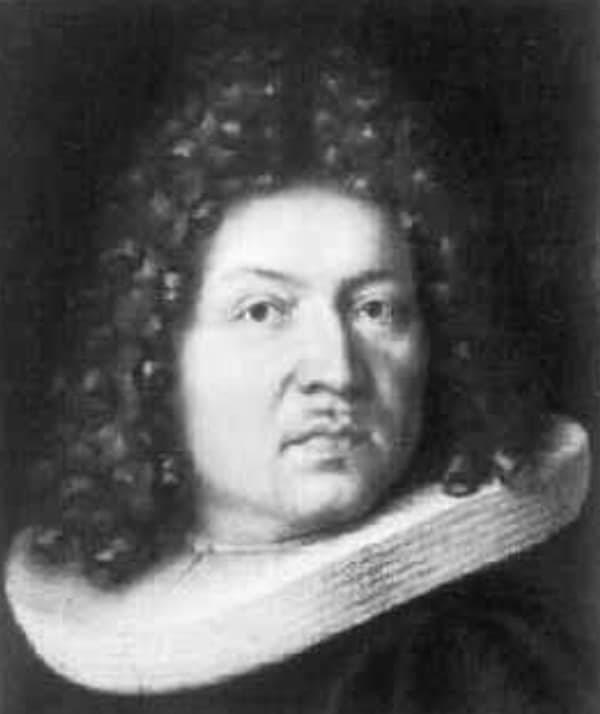
Jacob Bernoulli was born on January 6, 1654, in Basel, Switzerland. He hailed from the prominent Bernoulli family, known for its multi-generational contributions to mathematics. The Bernoullis, almost a century before the birth of Jacob, had fled from Belgium to Switzerland in 1567 when Philip II, King of Spain sent an army to the Netherlands to establish Catholic rule in the predominantly Protestant country. (This occupation was a precursor to the amphibious invasion of 1588 known as the Spanish armada.) Jacob’s father Nicklaus, inherited a successful spice business in Basel and his mother came from a prominent family of bankers in Basel, Although Jacob’s parents valued education, they insisted that their older son study theology and philosophy in spite of his preference for mathematics. Under protest, Jacob acceded to their wishes, graduating in 1671 from the University of Basel with a master’s degree in philosophy and in 1676 with a licentiate in theology. However, during this period his natural inclination had impelled him to secretly pursue the study of mathematics and astronomy.
After graduation, Jacob moved to Geneva and then travelled to France where he studied mathematics with the followers of Descartes. In 1681, he went to the Netherlands and then to England where his interest in astronomy was further ignited by a meeting with Robert Hooke. By 1685, Jacob was fully embracing mathematics, publishing articles on the connections between logic and algebra and on the laws of probability. He followed these in 1687 with publications in geometry and in 1689 with the proofs of the divergence of various infinite series. Bernoulli further applied some of his work on the limits of infinite series to articulate the law of large numbers, defining probability of an event as the limit of its relative frequency as the number of trials becomes infinitely large.
In May 1690, Jacob Bernoulli published in Acta Eruditorum, the problem of determining the equation of the curve (called an isochrone) along which a particle will descend under gravity, in the same time, independent of its starting point. In that publication he showed that the equation of the isochrone is a solution of a particular first-order linear differential equation. In 1696, he solved that equation using the separation of variables technique and this differential equation has subsequently been known as the Bernoulli equation. It was in this paper that the term “integral” first appeared in the mathematical literature as the inverse operation to differentiation.
While working on the isochrone problem, Jacob had come upon the famous brachistochrone problem, that seeks the equation of the curve down which a particle must slide (without friction) under the influence of gravity in minimum time between given upper and lower points. Jacob and his brother Johann had both solved this problem in 1695, but before publishing their solution, Jacob and Leibniz posted the problem as a “challenge to the mathematicians of Europe.” A friend of Isaac Newton brought this challenge to Newton’s attention in January 1996. According to some historical reports, Newton solved this problem quickly, using techniques that expanded the calculus of variations and he published his solution anonymously. Bernoulli is reported to have immediately recognized its anonymous author by his masterful solution.
Although Jacob and his younger brother had worked on similar problems, their relationship after 1697 gradually degenerated from cooperation into competition. Jacob boasted that Johann’s achievements were merely a consequence of his mentoring, while Johann believed that Jacob’s prominence was stifling his chance for recognition. Historians of mathematics generally attribute fault in equal portions for the vitriolic rivalry that subsequently unfolded. Yet, in spite of the denigration that the two brothers visited on each other’s achievements, both Bernoulli’s made very significant contributions to mathematics.
One of Jacob’s most notable contributions was in exponential series and the calculus of finite differences, published in 1713 under the title Ars Conjectandi eight years after his death on August 16, 1705. In that treatise, Jacob Bernoulli introduced the fundamental concepts of probability and combinatorics, that laid the groundwork for these fields. Jacob’s death left vacant the chair of mathematics at Basel and his brother Johann became his successor.
Jacob Bernoulli left a large footprint in the mathematical landscape, and he continues to be celebrated for breadth and depth of his mathematical insights. His fascination with the properties of the logarithmic spiral prompted him to request the inscription that now adorns his gravestone, Eadem Mutata Resurgo” (I shall arise the same though changed.)
